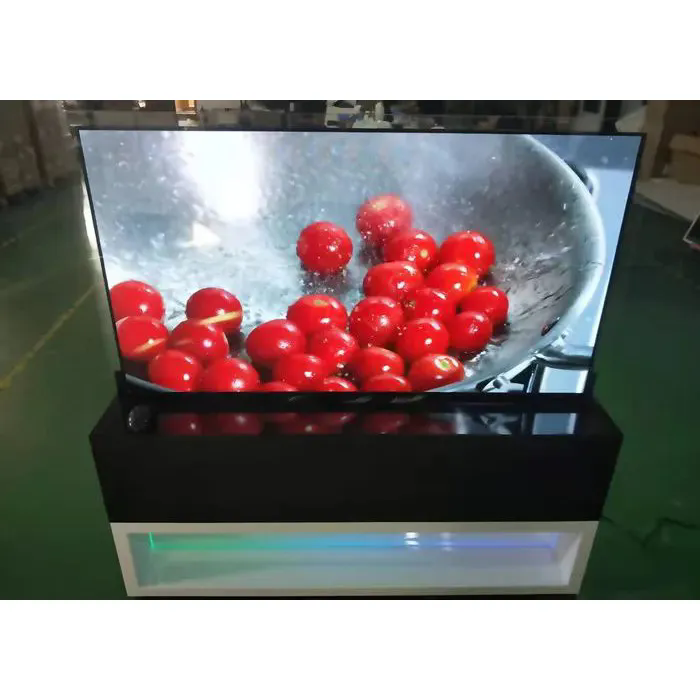Understanding Transparent OLED Displays: Your Questions Answered
2024-11-05
Transparent OLED (Organic Light Emitting Diode) displays are revolutionizing the way we think about screens and visual technology. With their unique combination of transparency and high-quality visuals, they are finding applications in various fields, from advertising to automotive design. In this blog, we’ll answer some common questions about transparent OLED displays, shedding light on their features, benefits, and potential uses.
What is a transparent OLED display?
A transparent OLED display is a type of screen that allows light to pass through while still displaying images and videos. Unlike traditional displays that block light, transparent OLEDs can be seen through when turned off, making them ideal for applications where visibility and aesthetics are crucial. These displays utilize organic compounds to emit light and are constructed on a transparent substrate, giving them their unique see-through quality.
How does a transparent OLED display work?
Transparent OLED displays work by using organic materials that emit light when an electric current is applied. The layers of the display consist of an anode, organic layers, and a cathode. When voltage is applied, electrons and holes recombine in the organic layer to produce light. The transparent substrate allows the emitted light to pass through while also enabling visibility of objects behind the display when it is turned off. This dual functionality is what sets transparent OLEDs apart from traditional display technologies.
What are the key features of transparent OLED displays?
Transparent OLED displays boast several impressive features:
1. Transparency: They can be transparent when not in use, allowing users to see through the screen.
2. High Resolution: Transparent OLEDs provide vibrant colors and high-definition images, making them visually appealing.
3. Wide Viewing Angles: They offer excellent viewing angles, ensuring that the displayed content can be seen clearly from various perspectives.
4. Thin and Lightweight: These displays are typically thin and lightweight, making them easy to integrate into different environments and applications.
5. Energy Efficient: Transparent OLEDs consume less power compared to traditional LCDs and some other display technologies, contributing to energy savings.
What are the advantages of using transparent OLED displays?
The advantages of transparent OLED displays include:
1. Enhanced Aesthetics: Their ability to blend with surroundings makes them ideal for modern design applications, such as storefronts and smart home devices.
2. Interactive Applications: Transparent OLEDs can be used in interactive displays, allowing users to engage with information while still seeing the environment around them.
3. Versatile Use Cases: They can be employed in various industries, including retail, automotive, architecture, and entertainment, offering unique solutions for advertising and information display.
4. Reduced Footprint: Their slim design allows for integration into spaces where traditional screens may not fit, maximizing usability without sacrificing style.
What are the potential applications of transparent OLED displays?
Transparent OLED displays have a wide range of potential applications:
1. Retail Advertising: Stores can use transparent OLEDs in windows to showcase products while allowing passersby to see through.
2. Automotive Displays: They can be integrated into car windshields or dashboards, providing drivers with essential information without obstructing their view.
3. Smart Home Devices: Transparent OLEDs can be used in home appliances, such as refrigerators or mirrors, displaying information like recipes or notifications while remaining functional.
4. Architectural Features: In modern architecture, these displays can enhance the design of buildings, creating interactive walls or windows.
5. Augmented Reality: Transparent OLEDs can be a key component in augmented reality systems, overlaying digital information onto the physical world.
Are there any challenges associated with transparent OLED technology?
While transparent OLED displays offer many benefits, they also face challenges:
1. Cost: The manufacturing process for transparent OLEDs can be more expensive than traditional display technologies, potentially limiting widespread adoption.
2. Brightness: Achieving high brightness levels while maintaining transparency can be challenging, especially in brightly lit environments.
3. Durability: Transparent OLEDs may be more susceptible to damage compared to conventional displays, requiring protective measures.
4. Limited Market Availability: As a relatively new technology, transparent OLED displays are not yet as widely available as traditional displays, which may affect accessibility for some consumers.
What does the future hold for transparent OLED displays?
The future of transparent OLED displays looks promising. As technology advances, we can expect improvements in manufacturing processes, cost reductions, and enhancements in brightness and durability. Industries such as advertising, automotive, and architecture are likely to see increased adoption of transparent OLEDs as they continue to seek innovative ways to engage consumers and enhance user experiences. Additionally, as smart home technologies evolve, transparent OLEDs may become integral to creating more interactive and aesthetically pleasing environments.
Conclusion:
Transparent OLED displays represent a significant leap in display technology, combining aesthetics with functionality. With their unique ability to provide high-quality visuals while remaining see-through, they offer exciting possibilities across various applications. As the technology matures, we can anticipate a future where transparent OLEDs become commonplace, enhancing the way we interact with the world around us. Whether in retail, automotive, or smart homes, the potential of transparent OLED displays is vast and ever-expanding.



